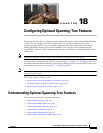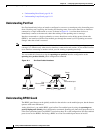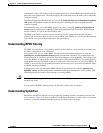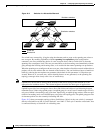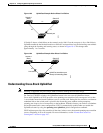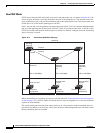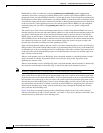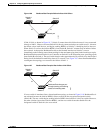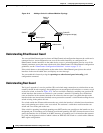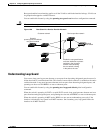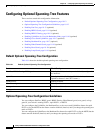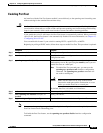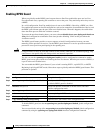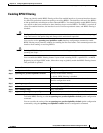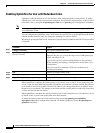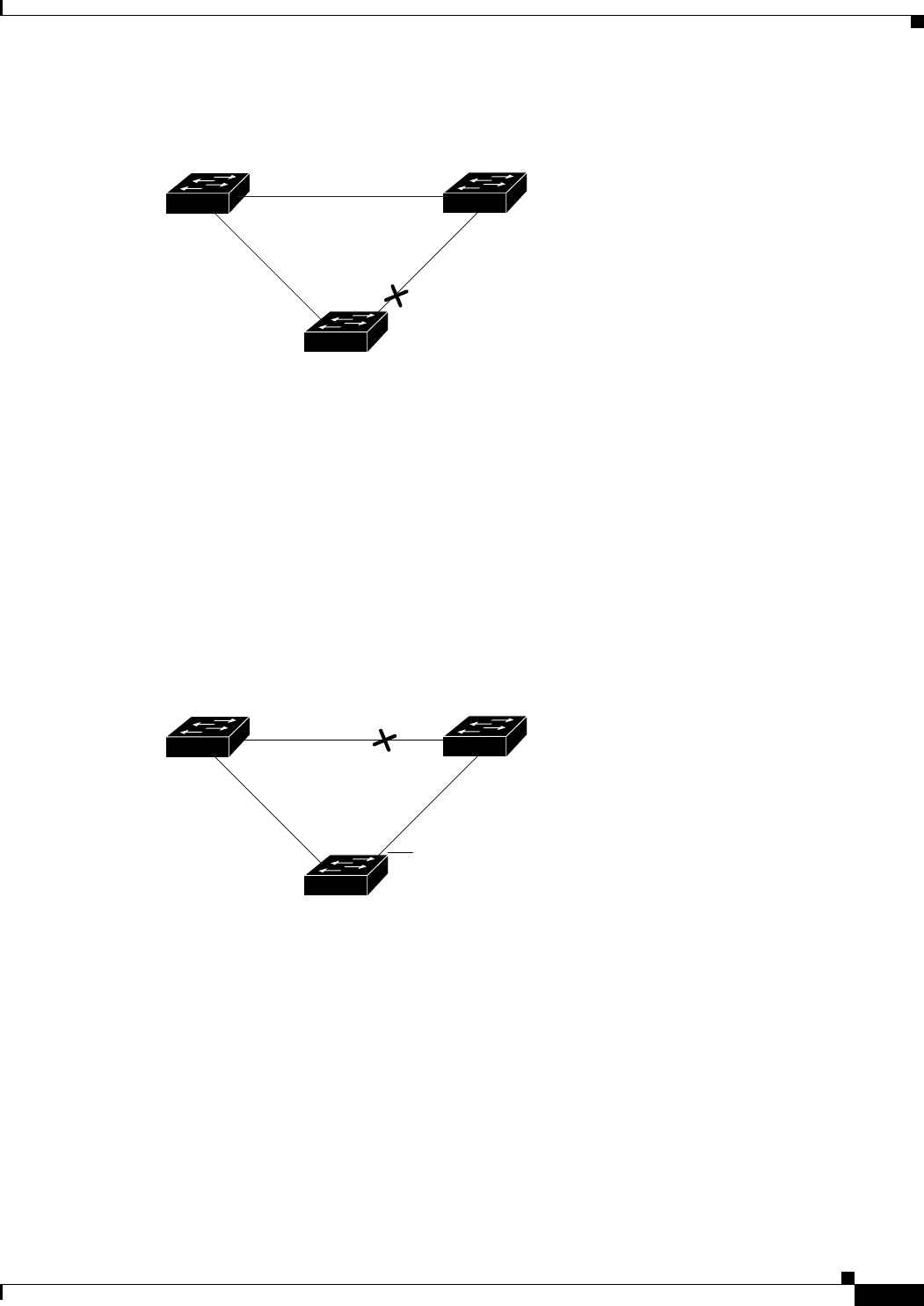
18-9
Catalyst 2960 and 2960-S Switch Software Configuration Guide
OL-8603-09
Chapter 18 Configuring Optional Spanning-Tree Features
Understanding Optional Spanning-Tree Features
Figure 18-6 BackboneFast Example Before Indirect Link Failure
If link L1 fails as shown in Figure 18-7, Switch C cannot detect this failure because it is not connected
directly to link L1. However, because Switch B is directly connected to the root switch over L1, it detects
the failure, elects itself the root, and begins sending BPDUs to Switch C, identifying itself as the root.
When Switch C receives the inferior BPDUs from Switch B, Switch C assumes that an indirect failure
has occurred. At that point, BackboneFast allows the blocked interface on Switch C to move
immediately to the listening state without waiting for the maximum aging time for the interface to expire.
BackboneFast then transitions the Layer 2 interface on Switch C to the forwarding state, providing a path
from Switch B to Switch A. The root-switch election
takes approximately 30 seconds, twice the Forward
Delay time if the default Forward Delay time of 15 seconds is set. Figure 18-7 shows how BackboneFast
reconfigures the topology to account for the failure of link L1.
Figure 18-7 BackboneFast Example After Indirect Link Failure
If a new switch is introduced into a shared-medium topology as shown in Figure 18-8, BackboneFast is
not activated because the inferior BPDUs did not come from the recognized designated switch
(Switch B). The new switch begins sending inferior BPDUs that indicate it is the root switch. However,
the other switches ignore these inferior BPDUs, and the new switch learns that Switch B is the
designated switch to Switch A, the root switch.
L1
L2 L3
Switch C
Switch A
(Root)
Switch B
Blocked port
44963
L1
L2 L3
Switch C
Switch A
(Root)
Switch B
Link failure
44964
BackboneFast changes port
through listening and learning
states to forwarding state.



